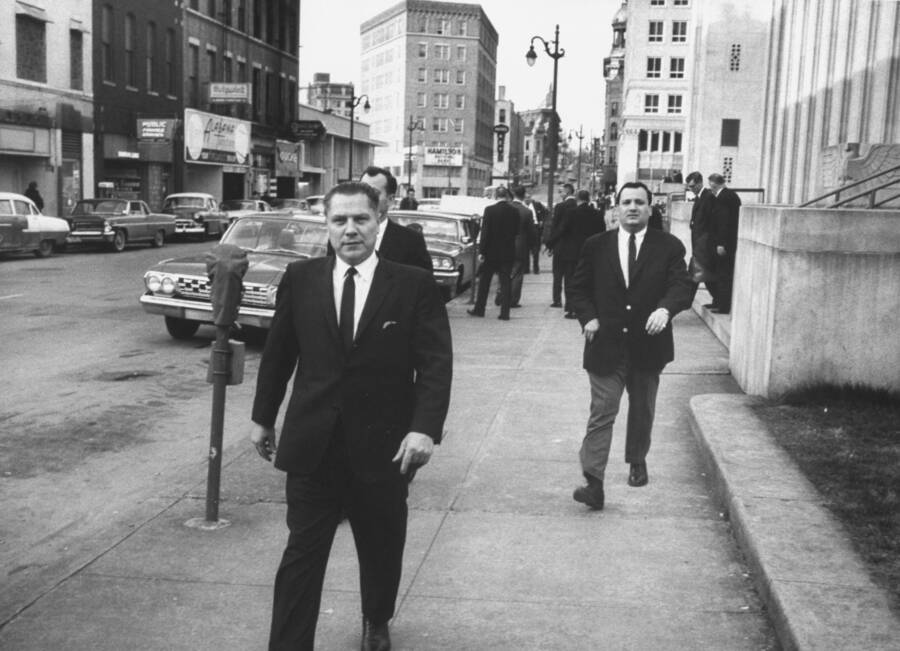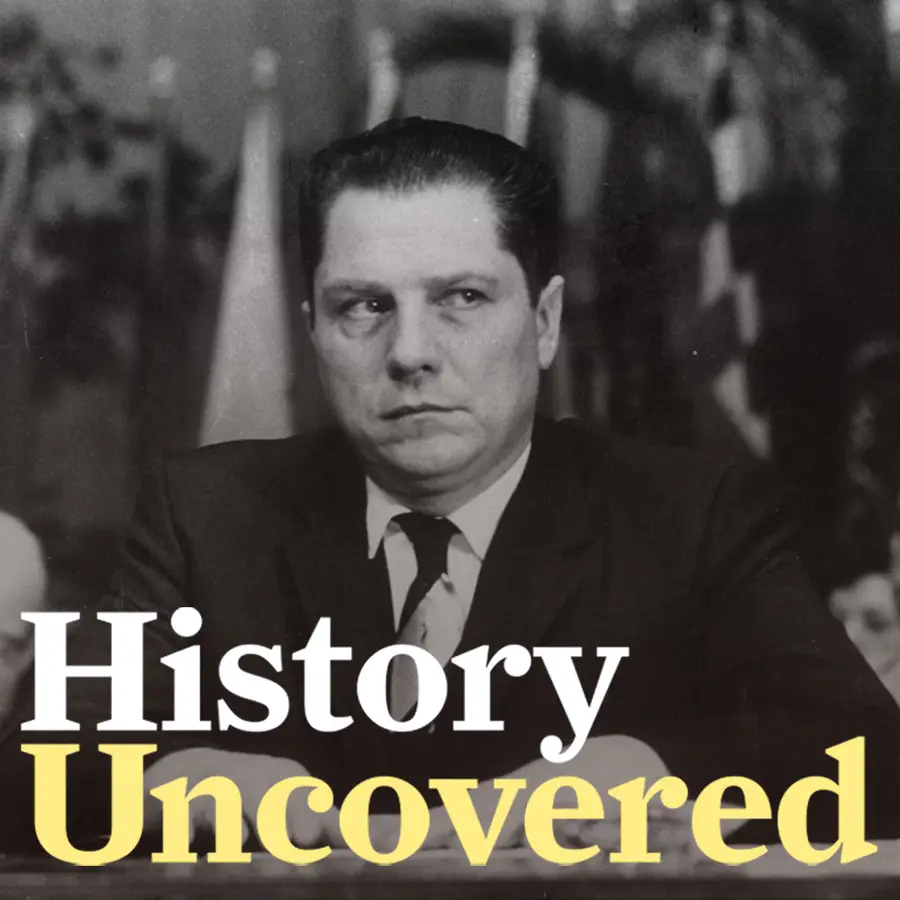On July 30, 1975, labor leader Jimmy Hoffa left his home in suburban Detroit to attend a meeting at the Machus Red Fox restaurant in Bloomfield Township, Michigan — but he was never seen again.
Jimmy Hoffa was one of the most powerful and controversial labor leaders in American history. As president of the International Brotherhood of Teamsters from 1957 to 1971, Hoffa transformed the union into a formidable political and economic force, representing more than 1.7 million truck drivers, warehouse workers, and other laborers. But the methods Hoffa used – and the people he associated with – were often less than savory.
Hoffa’s leadership was riddled with allegations of corruption, ties to organized crime, and violent tactics against union rivals and employers. His troubles with the law only worsened in the 1960s, when Attorney General Robert F. Kennedy launched an aggressive campaign against organized crime and corrupt union practices. This eventually led to Hoffa’s imprisonment in 1967 on charges of jury tampering, attempted bribery, and fraud.
He was sentenced to 13 years in prison but continued to lead the Teamsters from behind bars until 1971, when President Richard Nixon commuted his sentence with the condition that Hoffa refrain from union activities until 1980. The restriction on his union involvement frustrated Hoffa, who was determined to regain control of the Teamsters. By 1975, he was actively working to overturn the ban and reclaim his presidency from his successor, Frank Fitzsimmons.
But before he could put his plan into action, Jimmy Hoffa disappeared.

Robert W. Kelley/The LIFE Picture Collection/Getty ImagesTeamsters boss Jimmy Hoffa leaves federal court after his trial for jury tampering.
On July 30, 1975, Jimmy Hoffa left his home in suburban Detroit to attend what he believed was a peace negotiation with former associates in the Mafia: Detroit mob captain Tony Giacalone as well as Tony Provenzano, a Genovese family mobster who also happened to be a leader of the New Jersey Teamsters. Hoffa arrived at the meeting place — the Machus Red Fox restaurant in Bloomfield Township, Michigan — around 2:30 p.m., but was never seen again.
The theories surrounding Hoffa’s disappearance are numerous and often contradictory. The most widely accepted explanation implicates the mob, who had a history with Hoffa and saw him now as a threat to their control of the Teamsters pension fund and other operations. Giacalone and Provenzano seemed to be the most likely candidates, but both men denied involvement and had alibis. Several other mobsters did actually claim to be involved — but their claims were dismissed due to a lack of any solid evidence.
Over the ensuing decades, federal investigators have pursued countless leads, from claims that Hoffa was buried under Giants Stadium to suggestions that he was cremated or disposed of in some sort of industrial facility. In 2019, the FBI even conducted a search based on a tip that Hoffa was buried under a New Jersey landfill, but found nothing.
Despite multiple investigations, congressional hearings, and deathbed confessions, Hoffa’s fate remains unknown to this day.
Learn more about the music used in our podcast. History Uncovered is part of the Airwave Media network. Learn more about your ad choices by visiting megaphone.fm/adchoices.






